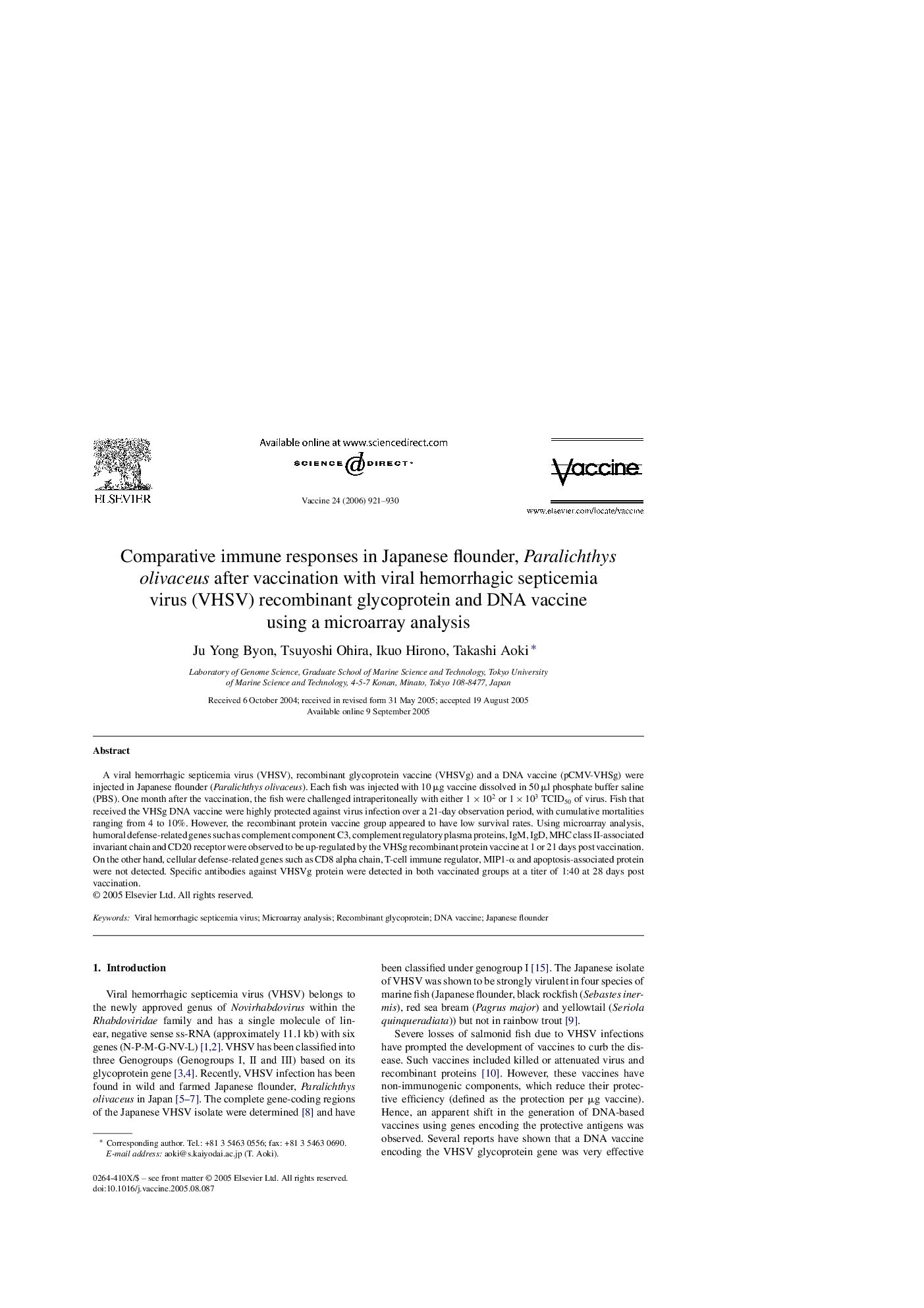| کد مقاله | کد نشریه | سال انتشار | مقاله انگلیسی | نسخه تمام متن |
|---|---|---|---|---|
| 2409862 | 1103235 | 2006 | 10 صفحه PDF | دانلود رایگان |

A viral hemorrhagic septicemia virus (VHSV), recombinant glycoprotein vaccine (VHSVg) and a DNA vaccine (pCMV-VHSg) were injected in Japanese flounder (Paralichthys olivaceus). Each fish was injected with 10 μg vaccine dissolved in 50 μl phosphate buffer saline (PBS). One month after the vaccination, the fish were challenged intraperitoneally with either 1 × 102 or 1 × 103 TCID50 of virus. Fish that received the VHSg DNA vaccine were highly protected against virus infection over a 21-day observation period, with cumulative mortalities ranging from 4 to 10%. However, the recombinant protein vaccine group appeared to have low survival rates. Using microarray analysis, humoral defense-related genes such as complement component C3, complement regulatory plasma proteins, IgM, IgD, MHC class II-associated invariant chain and CD20 receptor were observed to be up-regulated by the VHSg recombinant protein vaccine at 1 or 21 days post vaccination. On the other hand, cellular defense-related genes such as CD8 alpha chain, T-cell immune regulator, MIP1-α and apoptosis-associated protein were not detected. Specific antibodies against VHSVg protein were detected in both vaccinated groups at a titer of 1:40 at 28 days post vaccination.
Journal: Vaccine - Volume 24, Issue 7, 13 February 2006, Pages 921–930